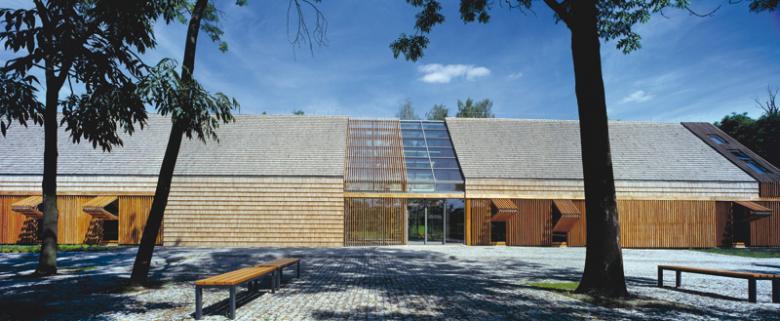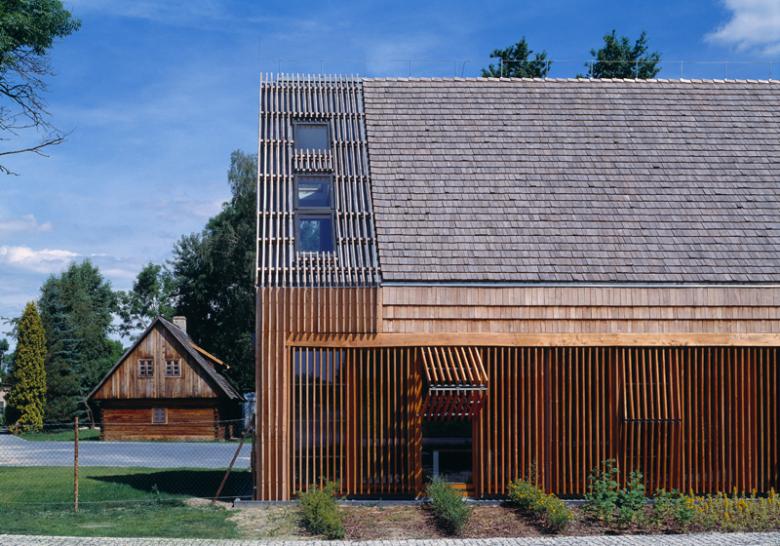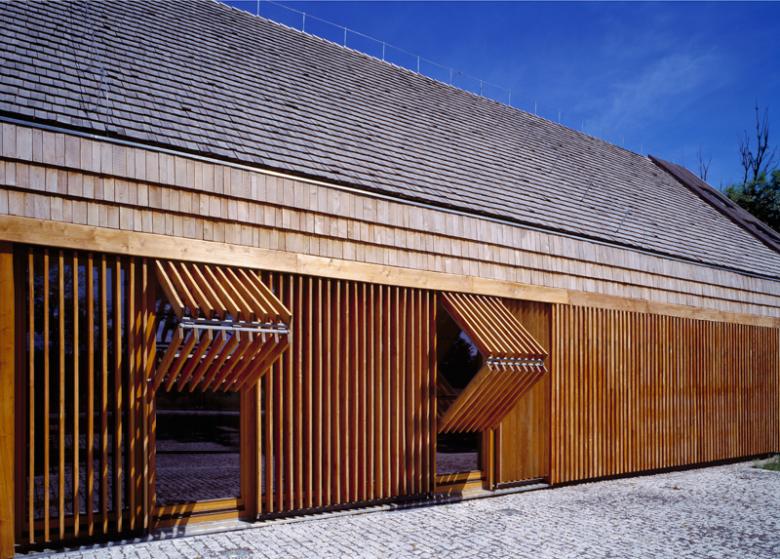Opole Open-Air Museum of Rural Architecture
Architecture of Compromise
11. August 2011
Architecture is art of compromise. We learn form of building does not exist without context of its surroundings. It is not easy to create valuable space with a balance between elements. Even more, it is difficult to enrich the space with new elements in order to maintain its continuity of style and aesthetic identity. Above was created by young people from db2 architects - designers of new reception and administration building of Opole Open-Air Museum of Rural Architecture.
The design was selected in national competition, and in 2008 has received a prize for the best SARP architectural object built with public funds. In the same 2008 year it was also nominated for the prestigious Mies van der Rohe Award. One can say, Opole museum collected another item , this time outstanding contemporary architecture building. Not so much an exhibit but high performance functional building, perfectly integrated into a historical, Opole region village landscape several centuries back.
Ethnographic Parks are special, demanding comprehensive approaches, spatial imagination and considerable ethnological knowledge museums. What matters is the feeling to combine many elements - sometimes distant in time and space - finished landscape. In ten hectares the museum collected objects grouped in farms specific for socio-economic status and larger sub-regional structures. The area is divided into three main spaces: at the entrance we are welcomed by Odra River left bank building types of (southern) part of the Opole region, in the middle objects from Opole district , and finally constructions typical for northern (Odra River right bank) Opole Silesia region. With these treatments in 1970 and obtained the impression of authenticity and the "naturalness" of the whole layout.
No doubts these advantages of open-air museum caused additional difficulty designing a new administration building. It have had to fulfil reception and welcoming function, and thus make the best impression on visitors. Not only designers were keen on respecting the scale, proportion and character of traditional buildings. The main goal was to complement and extend existing spatial layout.
There is astonishing assimilation between the shape of the building and surrounding environment, its combination of modern technology, traditional style and structures of Opole Region dwelling. Black, white chamber and hallway division, have been used to implement modern features of the object. Public space (white chamber) is separated by hallway from black chamber - the part intended for staff ,Next to it there is a conference, exhibition hall and meeting room.
Valiable architecture does not exist without high quality materials. Disciplined use of detail, large, flat and uniform facade surfaces, the severity of plastic, extensive glazing- all these modern features show up in a simple block of a gable roof. To avoid styling was not only necessary, it was even desirable and became the essence of compromise. It seems like impossible to make: contemporary functionality dressed into traditional folk with no Cepelia effect.
The facade was inspired and drawn up according to classical divisions of Silesia barn with wooden gates on the axis. Three types of materials were overlayered to create the fasade. Brick core of the building is complemented with glazing, in which the largest is located just above the main entrance. Another layer of the facade are wooden, vertical and thin blinds which are both protection from the sun and intruders. Some of them are mobile and allow to adjust the intensity of light entering the building, at the same time providing tectonic rythm of facade. The final layer (covering mainly the roof) is traditional shingle. Thust the building is perfectly corresponding with other objects exhibited in the park.
It boasts a clear design assumptions – linearity and repeatability of the form, humbleness and use of simple materials. This contrasts favorably with interior "organic" graphics - dull glass floral elements, light that is placed onto walls in the form of vivid stripes. Spatial and educational values of and ethnographic park are easily implemented into contemporary architecture of an administrative building of Opole Open-Air Museum of Rural Architecture . Paradoxicaly one may tempt to say, that the art of compromise is made present in every detail of uncompromising manner object. This building proves that Silesian architecture is not afraid of challenges and stands on a high international level; the notion of open-air museum is still enriched with new meanings.
Wojciech Prastowski
Opole Open-Air Museum of
Rural Architecture
2008
Opole
Client
Opole Open-Air Museum
of Rural Architecture
Architect
db2 architekci
Opole
General Contractor
Energopol Trade Opole
Photos
Wojciech KryÒski



